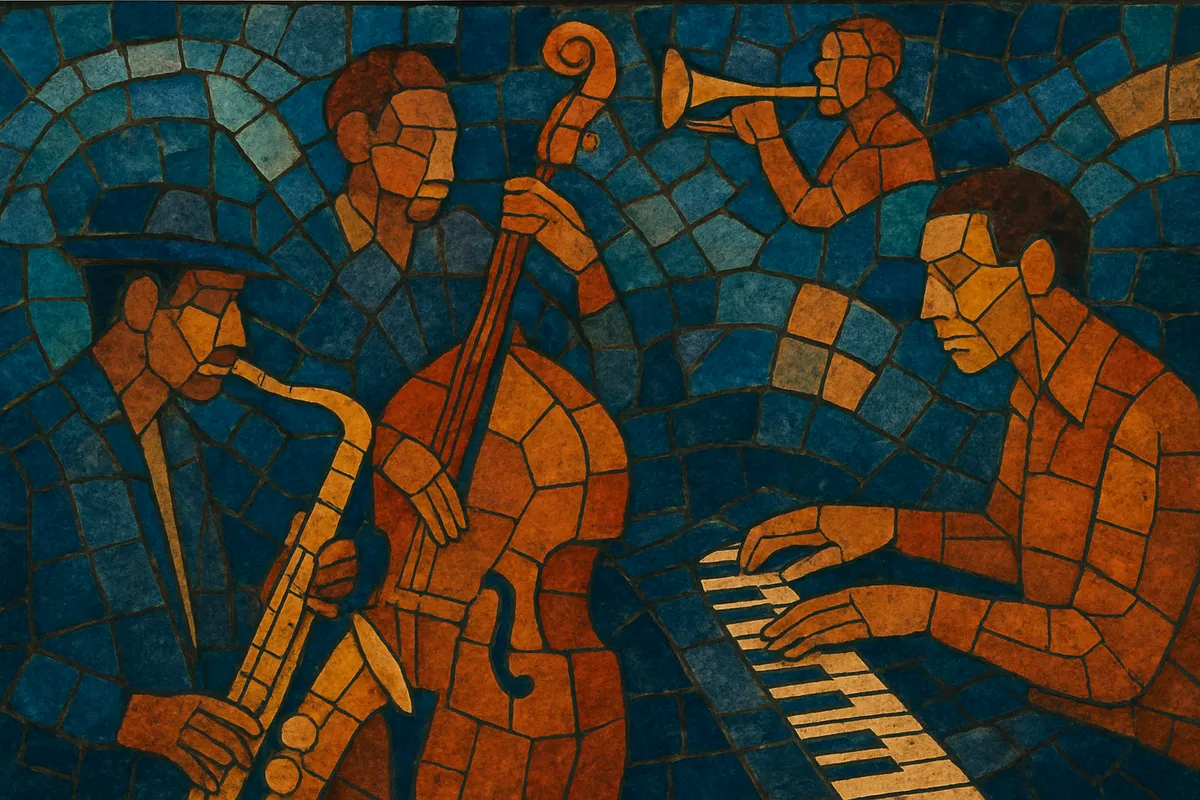Jazz house is a subgenre of house music that blends four-on-the-floor club rhythms with the harmony, instrumentation, and improvisational spirit of jazz.
It typically features swinging hi-hats, syncopated percussion, warm upright or electric bass lines, and extended jazz chords (7ths, 9ths, 11ths, 13ths) voiced on Rhodes, piano, or lush pads. Saxophone, trumpet, guitar, and vibraphone solos often appear, either sampled from classic sessions or performed live.
Tempos usually sit around 120–126 BPM, with grooves that feel both danceable and musically sophisticated. The result is music that can work as refined late-night club material or as heady, soulful listening—equally at home in lounges and on proper dance floors.
Jazz house emerged as DJs and producers in Chicago, New York, and later Europe began fusing the harmonic language and instrumentation of jazz with house’s steady club pulse. Early deep house already leaned on jazz chords and soulful textures, and the acid jazz movement primed audiences for jazz in contemporary dance settings. Producers sampled classic jazz records, invited session players into the studio, and re-contextualized solos over four-on-the-floor rhythms.
Throughout the 1990s, the sound solidified in both the US and Europe. New York’s Masters at Work helped set a gold standard for live musicianship within house, culminating in the Nuyorican Soul project, which showcased jazz, Latin, and soul elements on sophisticated club records. In France, St Germain brought a distinctly Parisian, smoky-jazz-club sensibility to house grooves, helping the style reach broader audiences. Detroit and Chicago artists such as Moodymann and Larry Heard nurtured deep, jazz-inflected house, emphasizing dusty sampling and rich chord progressions.
As the 2000s progressed, jazz house interacted with nu jazz, broken beat, and soulful house, with European labels and collectives encouraging live players and adventurous harmony. The sound found a home in lounges and boutique clubs, but also persisted in underground house circles that prized musicianship and crate-digging.
A new generation of producers continued the approach: sampling rare jazz sides, collaborating with horn sections and keyboardists, and seeking a balance between dance-floor utility and musical depth. The idiom remains a reliable pathway for DJs who want sophisticated harmonies and organic textures without sacrificing groove, and it continues to inform nu jazz, vocal house, and even strands of French and organic-leaning house aesthetics.


